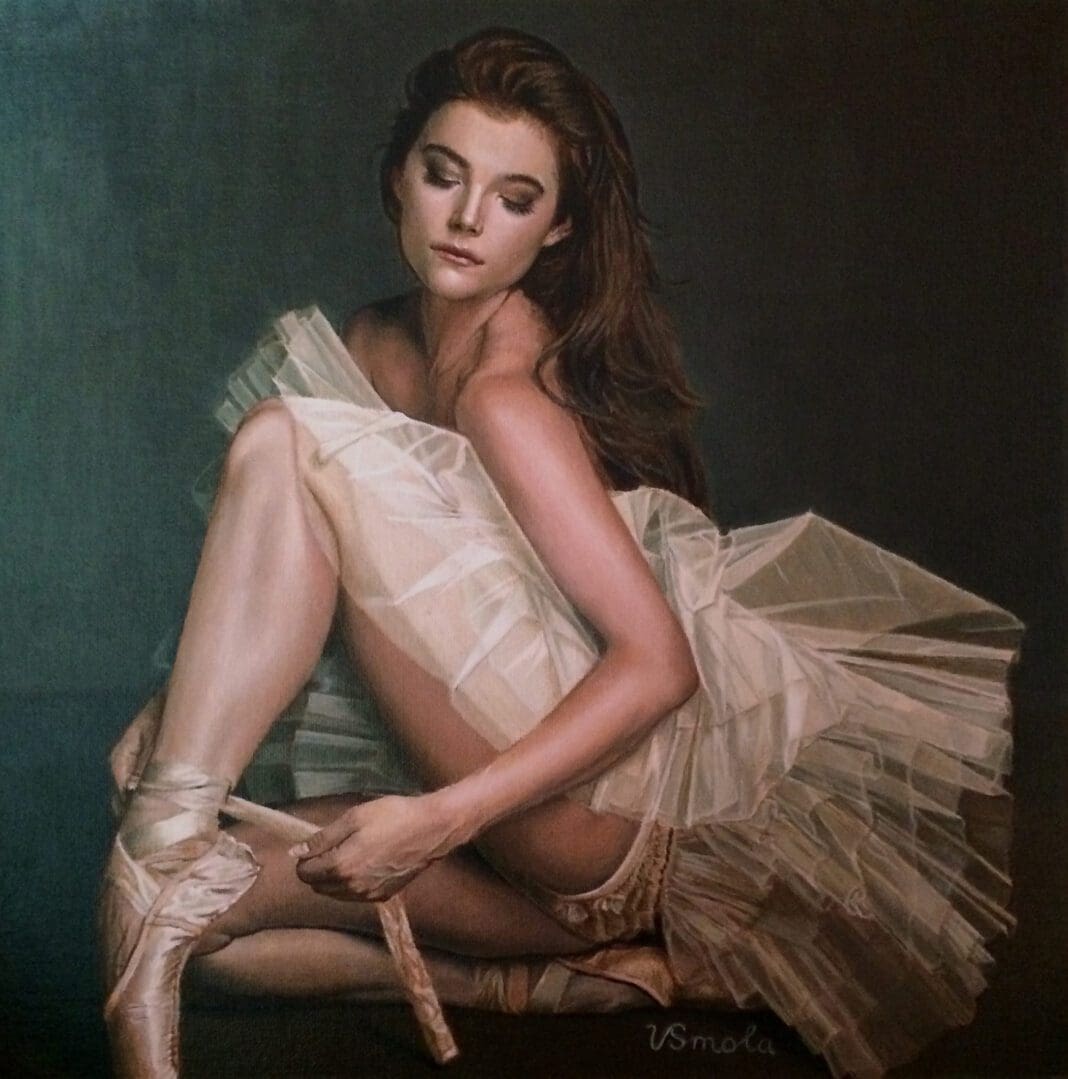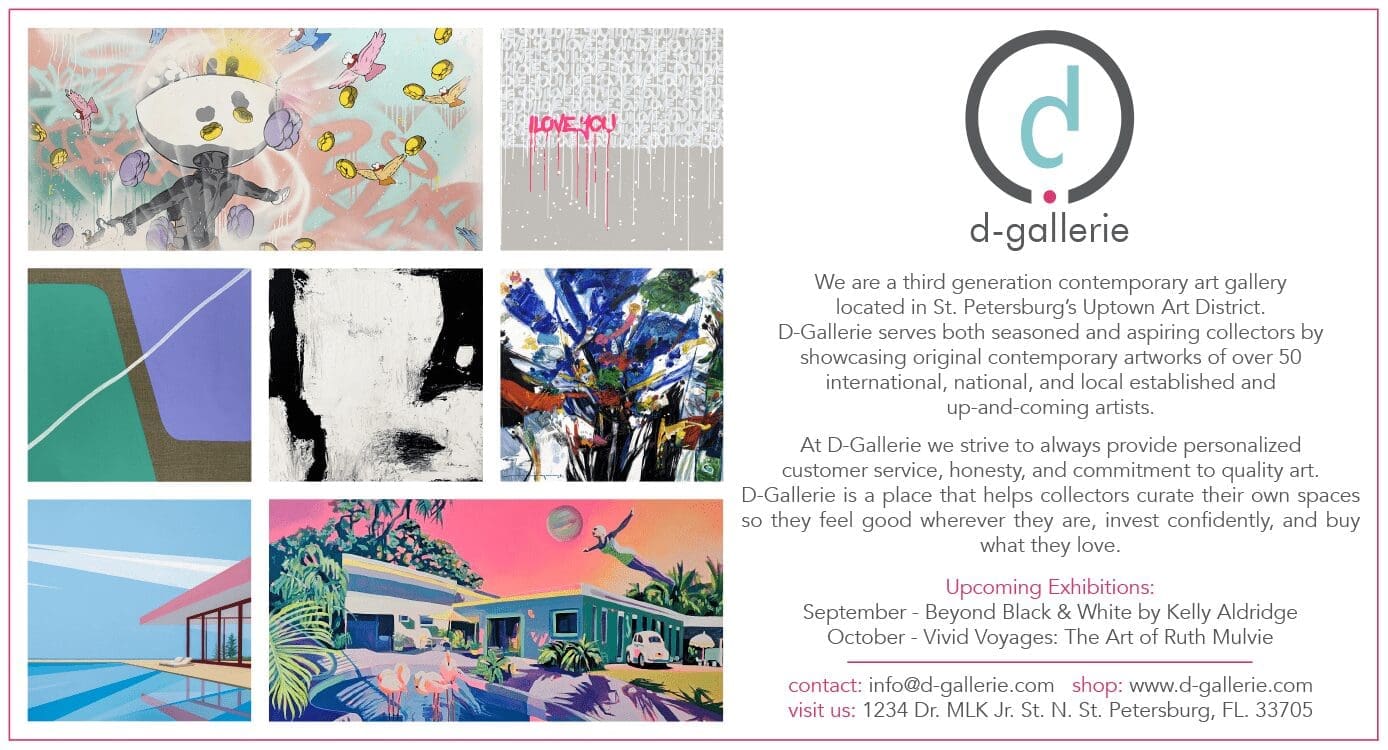Vlasta Smola has made art the fabric of her life. After moving to the United States to receive her MA in Communication Arts, she had a brief corporate career in marketing and graphic design. Her true passion was rooted in the fine arts, however, and before long she found her painting aspirations reignited.
Through her artwork she seeks to create examples of modern mythology, exploring the dualities of the conscious and unconscious states. But always, there is beauty. Its power, its mystery, its complete denial of common sense captivates Smola, and she, in turn must capture it on her canvas.
Though she studied figure drawing, character illustration, and fashion illustration at the Art Institute of Chicago, Vlasta’s remarkable painting skills are almost entirely self-taught. She developed her techniques through trial and error, and though Smola works mainly in acrylic, the skills she taught herself are ones generally employed by oil painters. Meticulously building her colors in loose washes using hair-thin brushes, she spends hours upon hours weaving visual narratives in the minutest detail.
Vlasta Smola art
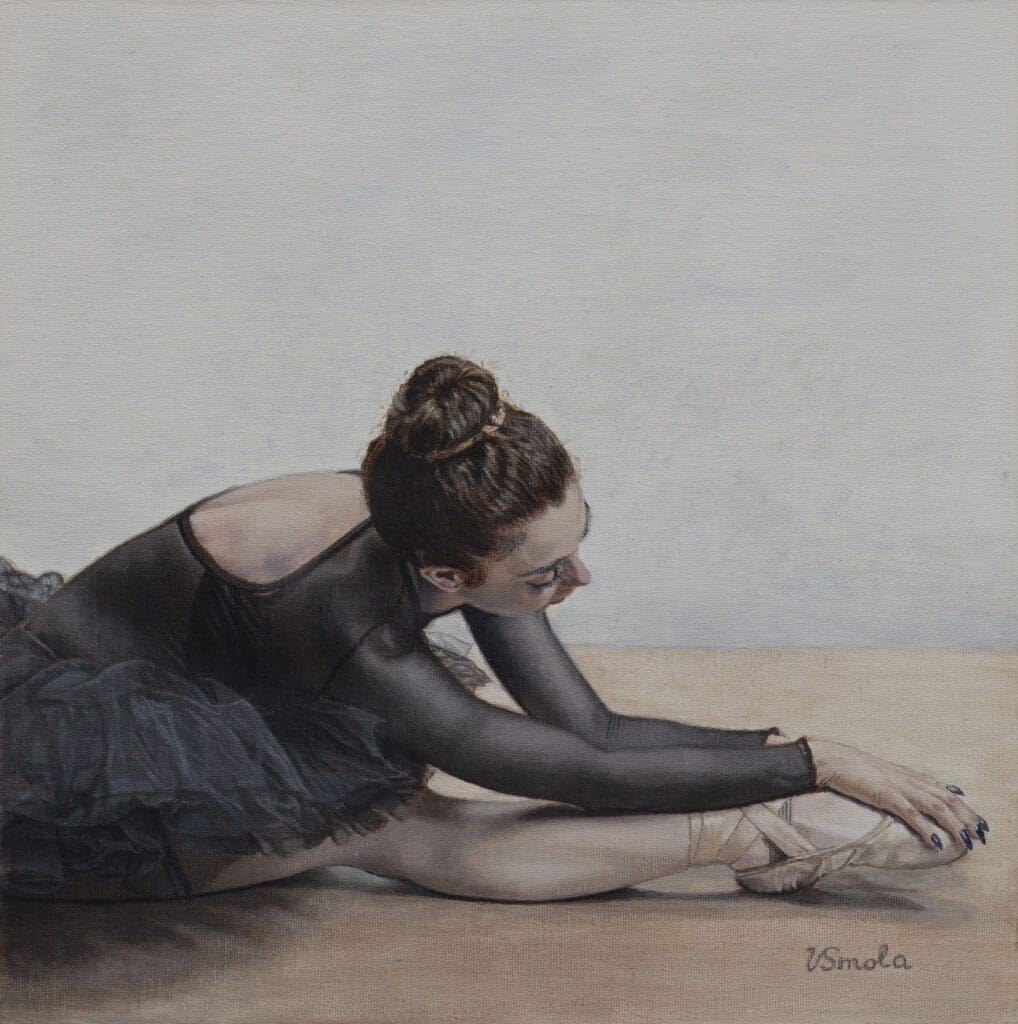
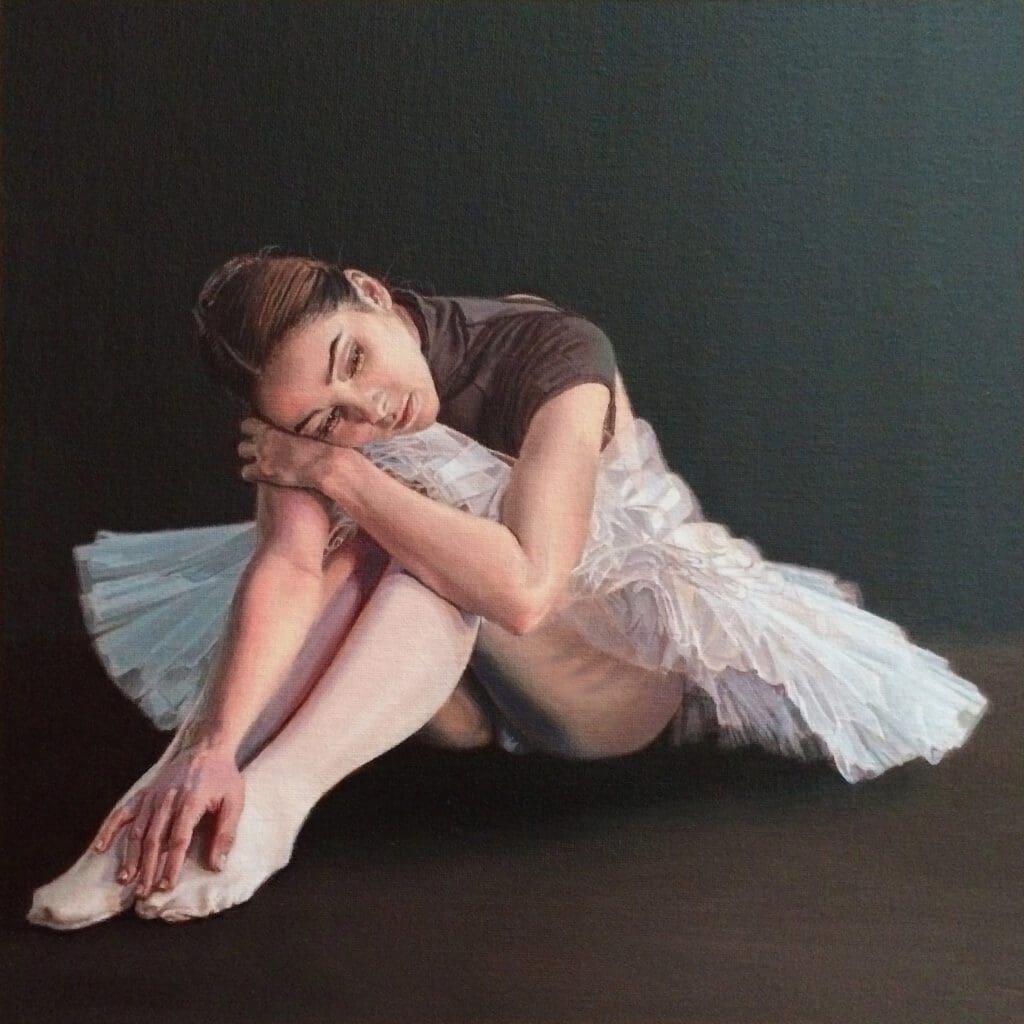
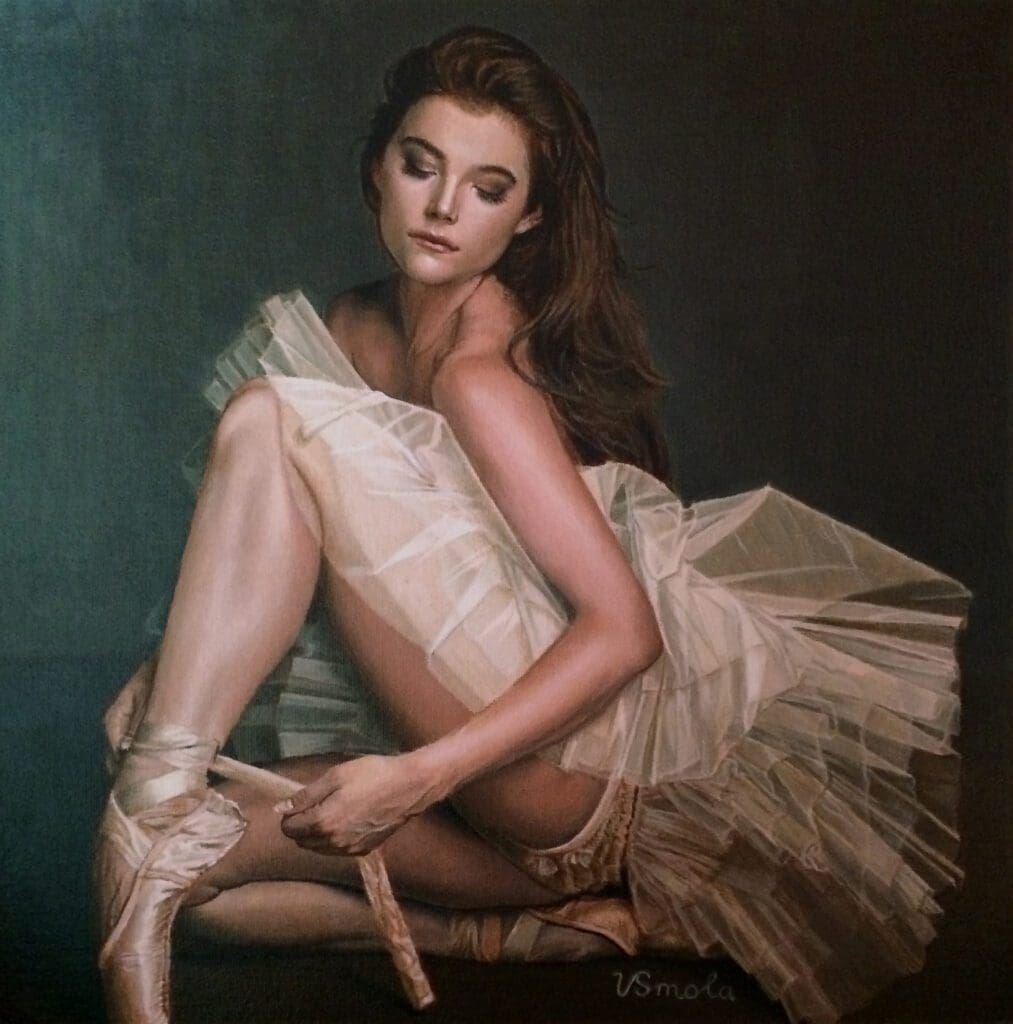
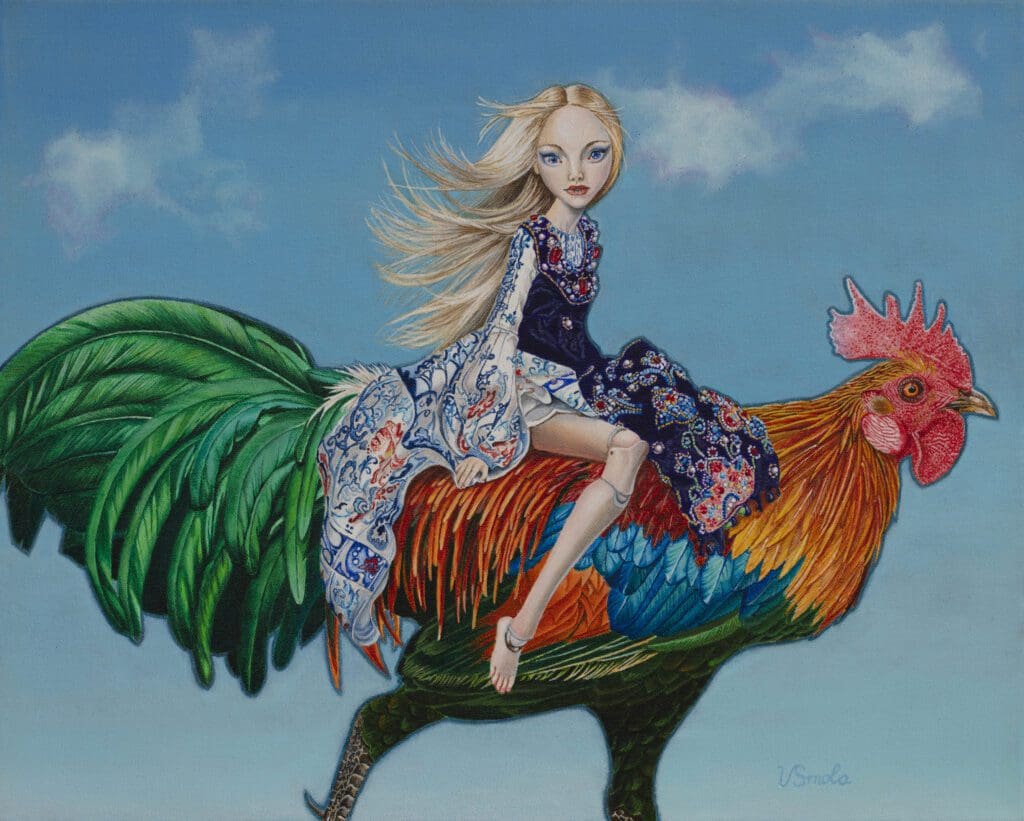
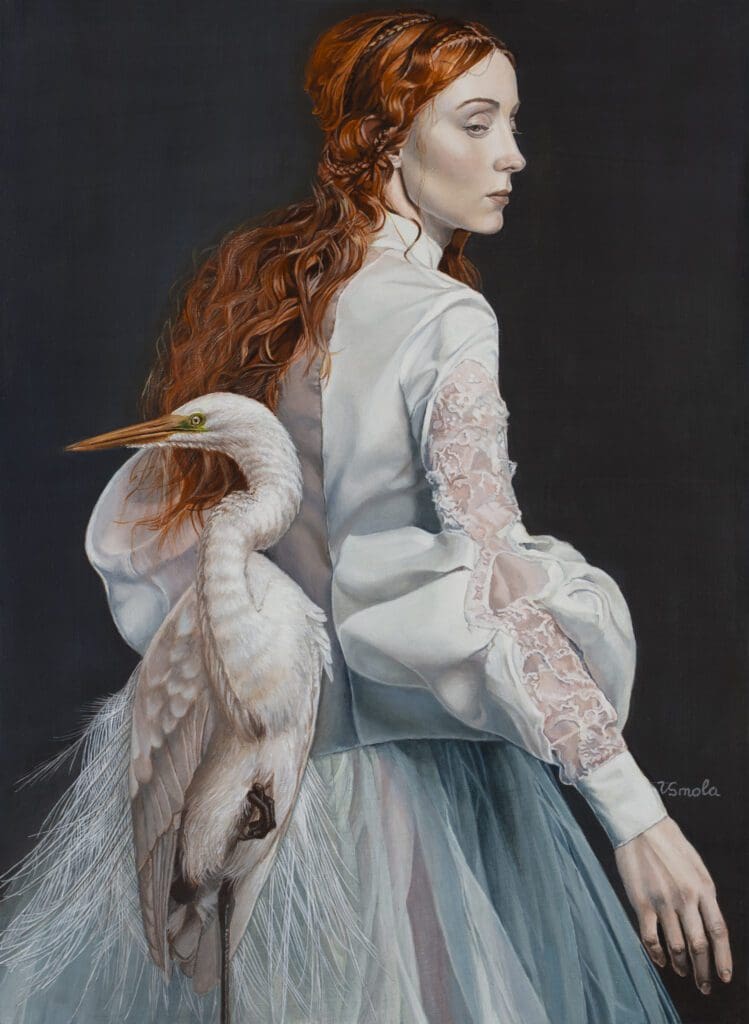
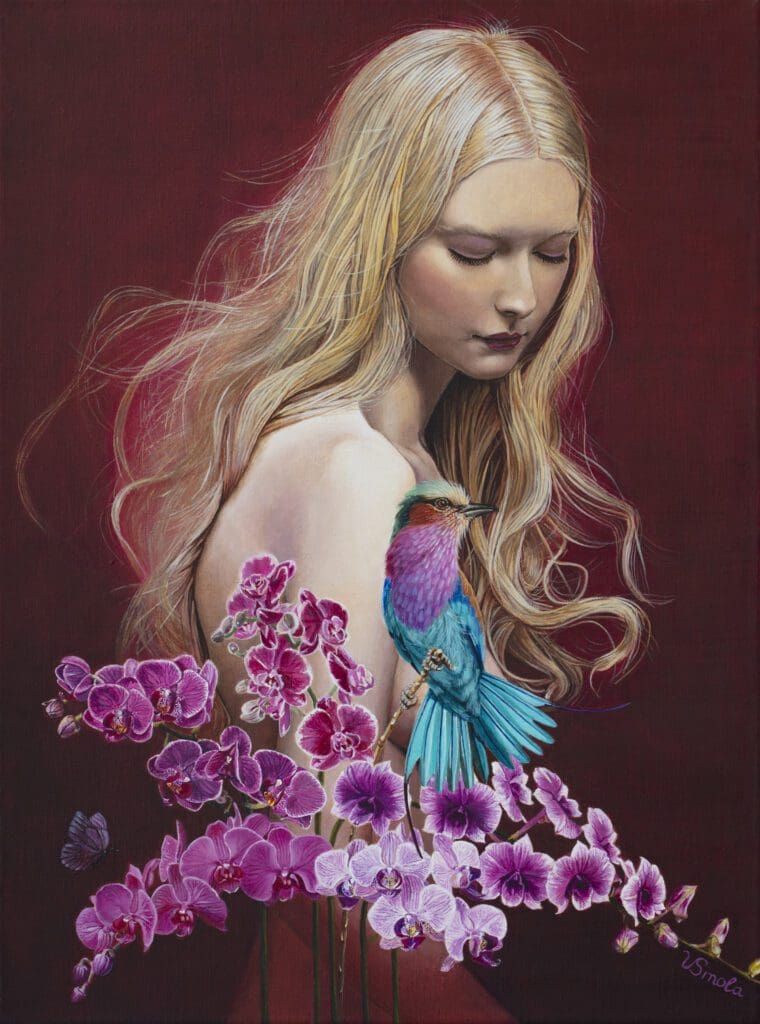
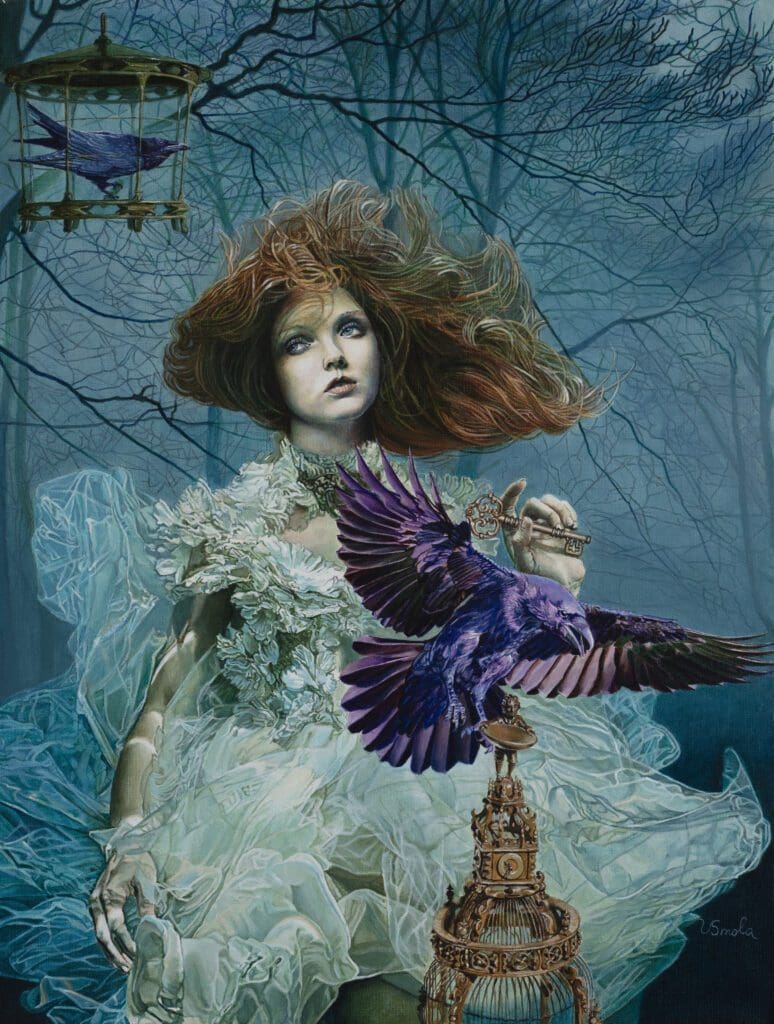
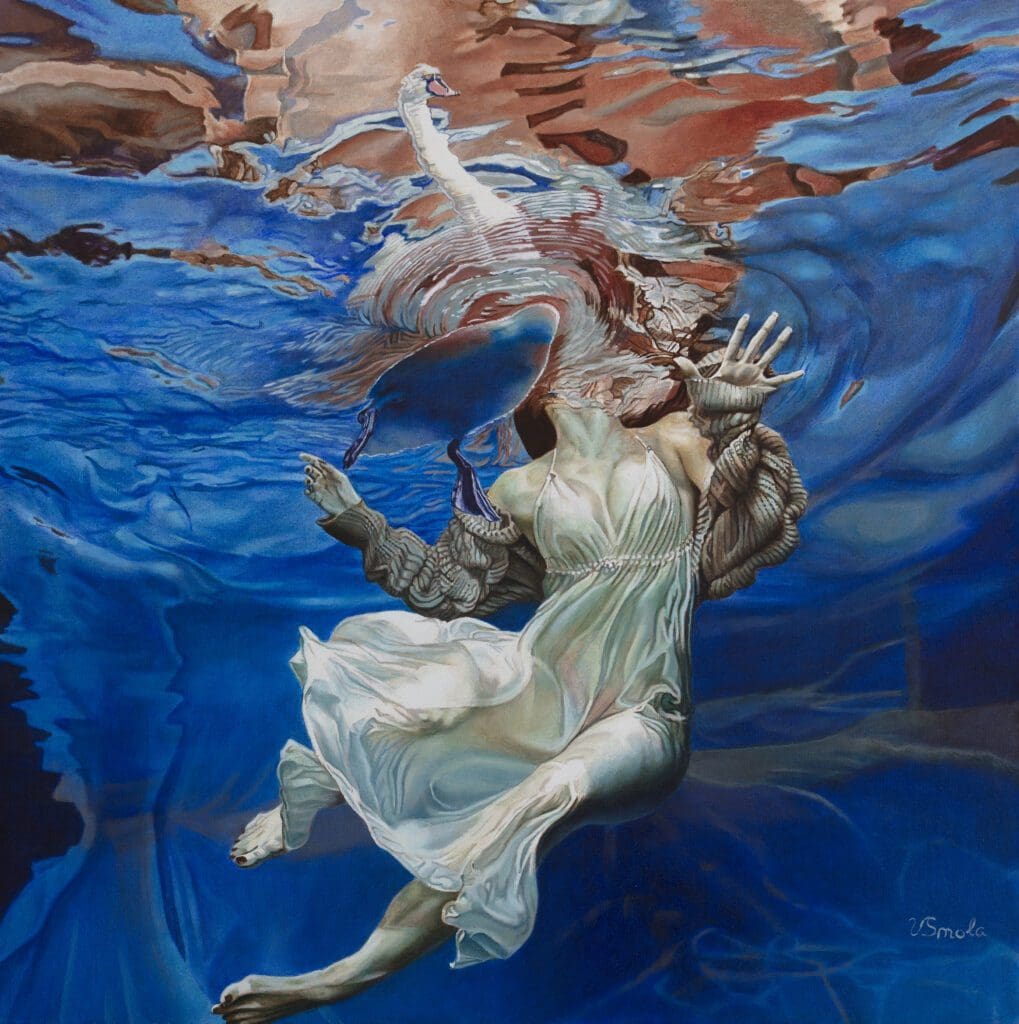
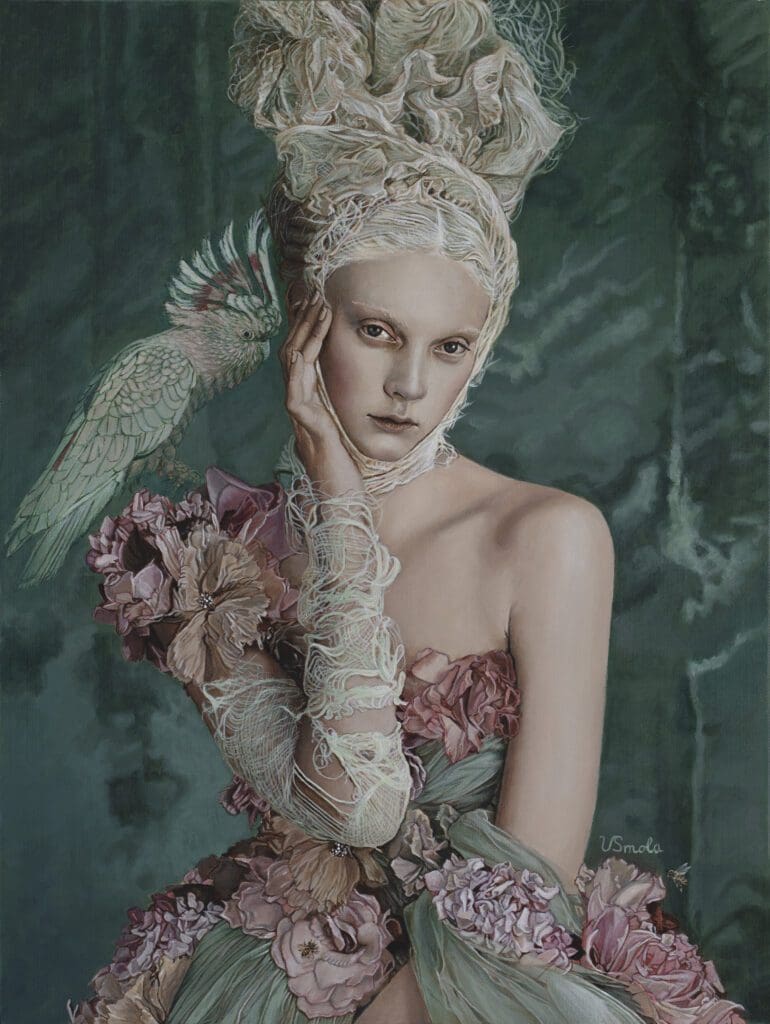
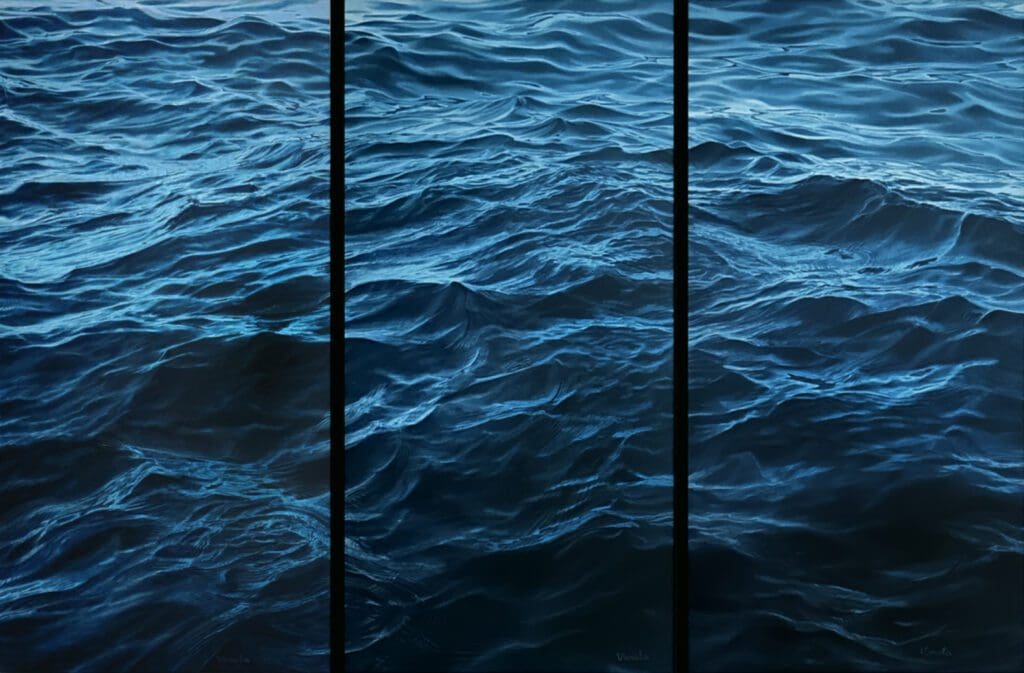

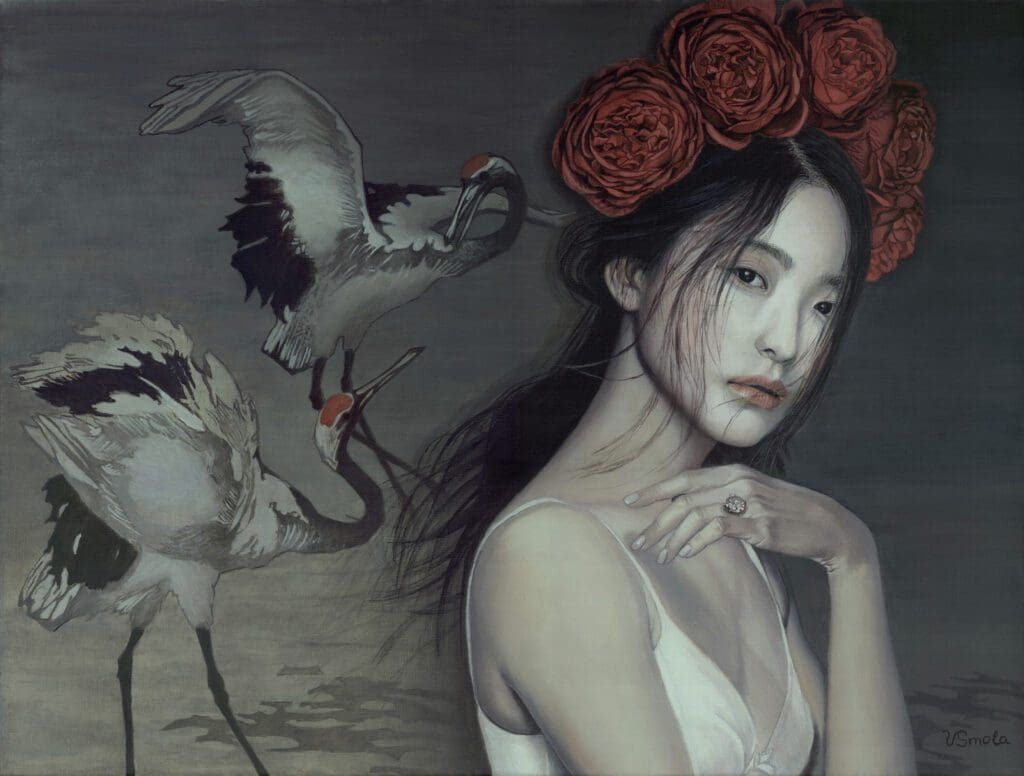
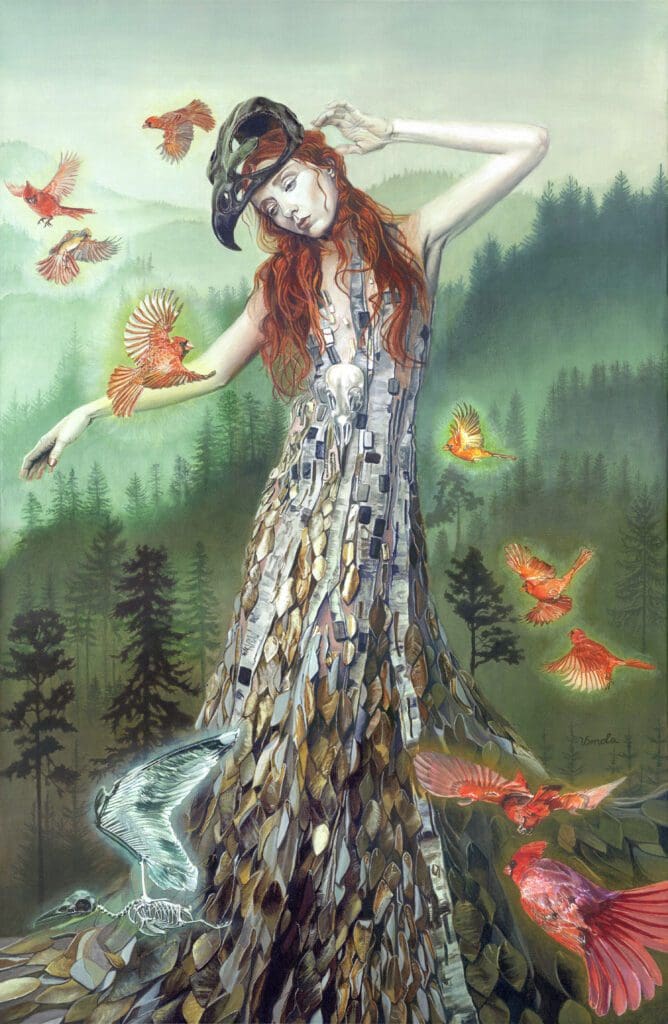
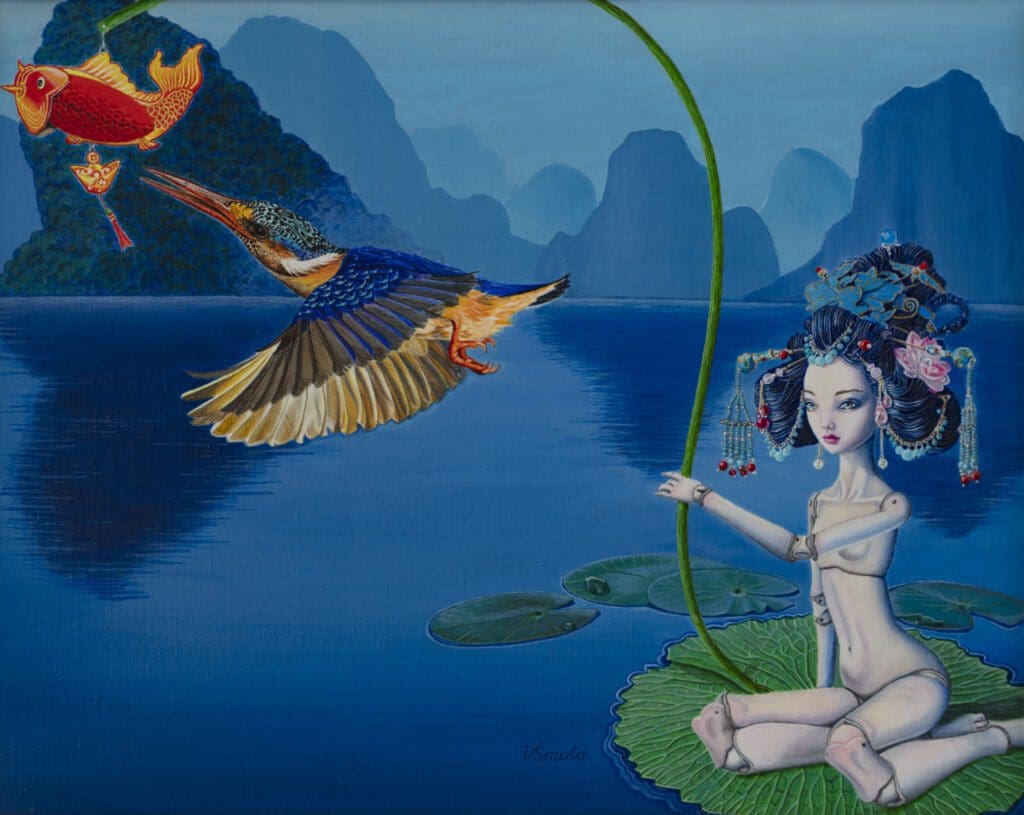
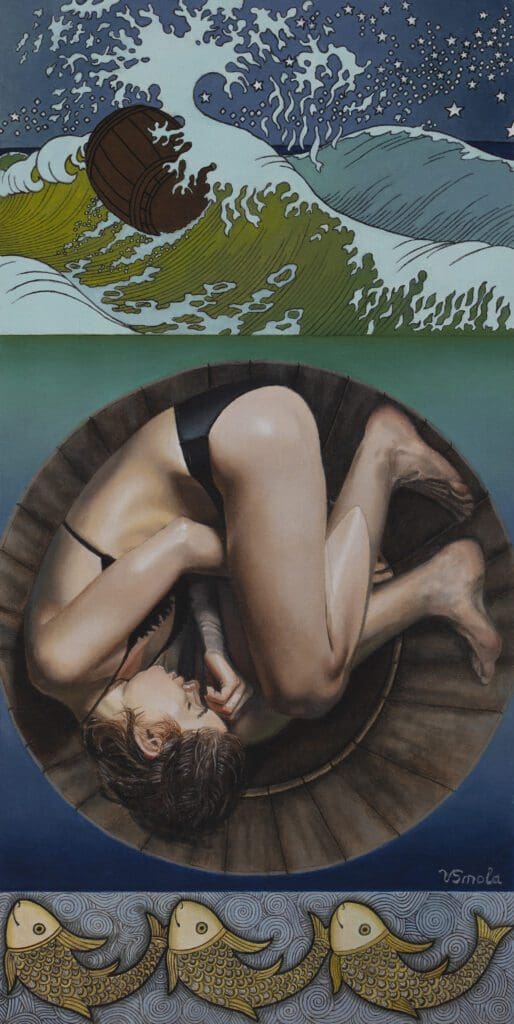
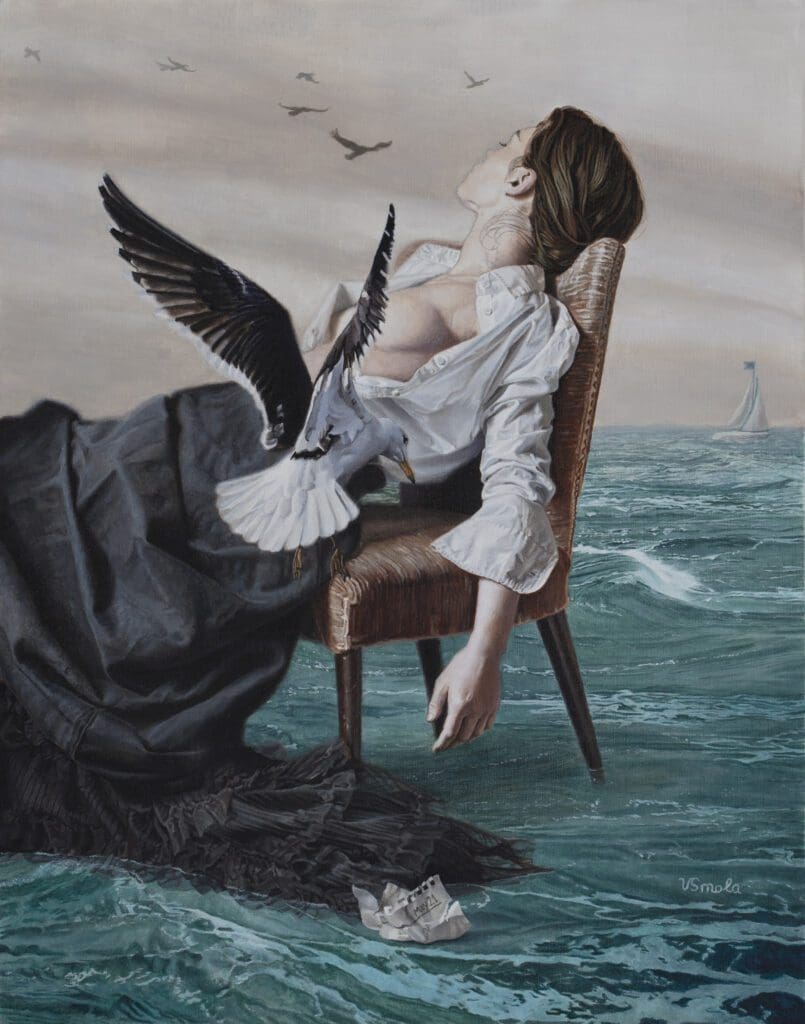
We set out to learn more about this talented, compelling artist.
What does magical realism mean to you, and what is it about that style of painting that resonates with you?
Despite including certain magic elements, magical realism is generally different from fantasy because it uses a substantial amount of realistic detail and employs magical or dreamlike elements to make a point about reality. I employ magical realism to transform reality ever so subtly, in a way that blurs the line between reality and imagination. Many of my paintings often explore a dream-conscious state, designed to increase a depth of perception and develop a poetic world view.
You have traveled extensively: Do these experiences influence your work, and if so, in what ways?
I grew up in Soviet controlled Ukraine, so I had little first-hand experience with free expression and the wider art world. My initial journey across Europe after graduating from university in Ukraine gave me the chance to directly experience the world masterpieces that shaped modern culture and civilization. In particular, the beauty of Spanish nature and its immeasurable cultural heritage have had an undeniable impact on my choices for years to come. During my time in Spain, I decided to learn Spanish as my third foreign language — which brought me to “Como Agua Para Chocolate” (Like Water For Chocolate) by Laura Esquivel. This in turn led me to discovering and joining the world of magical realism from Latin-America’s Gabriel GarcÃa Márquez and Isabel Allende to Japan’s Haruki Murakami…to my artwork.
How does it feel to finish a painting? Are you immediately ready to dive into the next one, or do you need a little time to reflect and regroup afterwards?
The truth is, normally, I don’t feel that I have finished my painting. There’s always something that can be developed or improved, I just know that I must stop, eventually. The next painting starts long before I put the blank canvas on the easel. I always have concepts developing, intentionally or in the back of my mind, for a few paintings at the same time. So many ideas, so little time!
Are there autobiographical elements in your paintings, and if so, are you willing to share how you reveal yourself in them?
Yes, every painting is a self-portrait one way or another. It’s about my aspirations, sentiments, hopes, desires, some secret. I guess I even choose my models somewhat like my physical type. I paint what I know and what I love, dance, swim, fashion, and with a bit of magic, the familiar elements help me create new allegories and stories.
Birds are a recurring theme in many of your paintings. Do they hold particular significance for you, and if so, what do they symbolize?
Throughout history, birds have been viewed as animals of special value and have been endowed with meanings often drawn from legends and stories that have endured over many generations. They have been used in folklore and poetry to allegorically portray human flaws and virtues. Birds lend themselves easily to the idea of magical realism, they are considered omens both for good and ill, and are sometimes thought to be the messengers of the gods. To me they symbolize unbridled freedom, harmony, nobility, bravery, hope, wisdom, and even mystery. Who hasn’t dreamed of flying?
Which artist(s) most inspire you, and what is it specifically about their work that you admire?
I would say Pre-Raphaelites, particularly John Everett Millais. Their love of nature, their masterful rendering of profound human emotions, and their sharp-focus technique of showing every tiny detail inspire me. One of the techniques that I often use was developed by Millais, painting in thin glazes of pigment over a wet white ground in the hope that the colors would retain jewel-like transparency and clarity. Additionally, through the works of the Pre- Raphaelite Brotherhood and their references, one can learn a lot about literature and history.
Are there any subjects or styles of painting that you have not yet explored and would like to?
Most of my paintings are done in acrylic on canvas, I have also worked extensively with watercolors. The medium that I have shied away from until recently is oils, mostly due to the long time they take to dry. Water, waves, and the underwater world fascinate and daunt me as a painter. It is my goal to learn to “go with the flow” and get more confident painting the shape-shifting fluidity of water.
Beyond creating a beautiful image, what drives the narratives of your paintings? Do all of your paintings contain a back story?
The ideas for my paintings come from the experiences that I have lived, from the books that I have read, even from the dreams that I have had. Sometimes, they kind of break free from me and develop by themselves as I start painting. So, yes, my paintings all contain a story.





